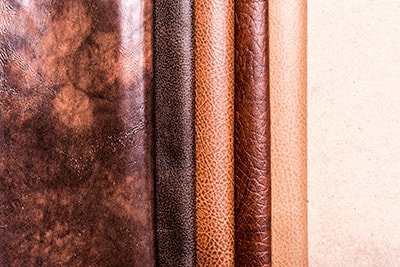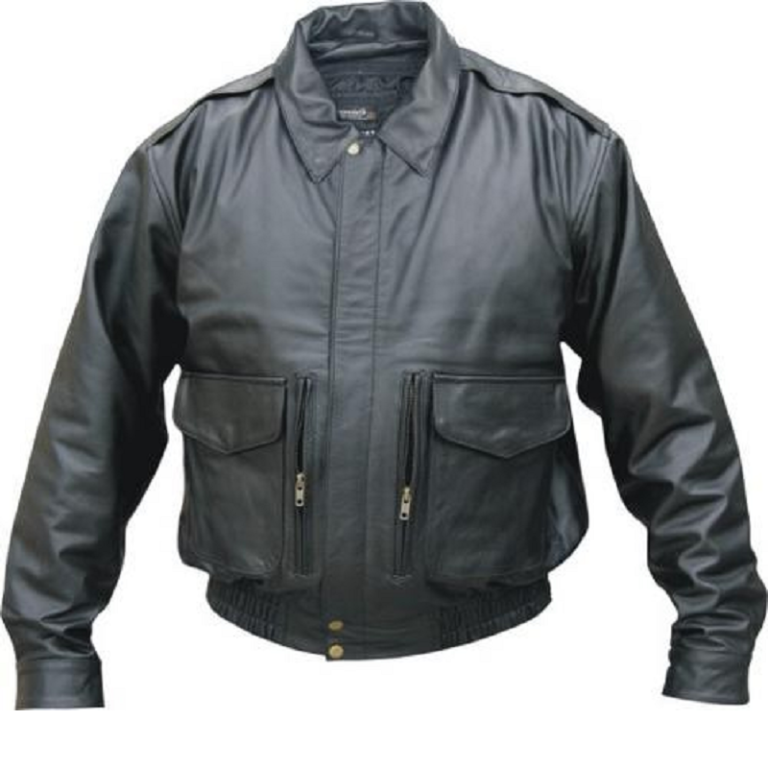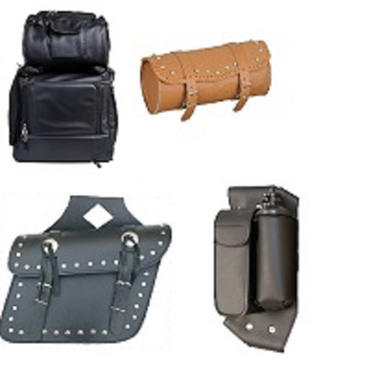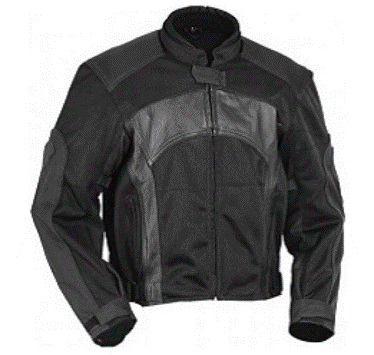The properties of leather vary considerably depending upon the type and quality of both the skins and the tanning process. Every piece of leather has individual markings which relate to its origins and add character to each skin. Like a fine wine, a good quality leather garment should improve with age. The natural elasticity of each hide means it is flexible and will stretch and return to its original shape. Leather also has a natural tendency to repel liquids and resist staining. It’s also fire resistant, and emits no toxic fumes, even when exposed to intense heat. Relative to virtually all man-made textiles, leather is very strong and has a high resistance level to tears and punctures. The comfort provided by most leather goods is due in part to leather’s ability to combine breathing and insulating properties. You may have heard… “Leather is hot in summer and cold in winter.” In reality, leather adjusts constantly to its environment. Because it is a natural product, leather “breathes” freely, maintaining a comfort level in all seasons.
Types of Garment Leather:
Cowhide
This is the most common leather used in the making of garments, furniture and leather goods. Cowhide as a category covers a wide spectrum of textures and quality, but generally, it is quite durable, easy to care for and resistant to water and dirt. Cowhide leather will maintain its integrity, taking on the shape of the wearer, making it more comfortable with everyday use. This affordable, functional leather offers fashion, value and endless colors and styles. See “Naked”, “Premium”, “Milled”, and “Split”.
Buffalo
This leather comes from the water buffalo common to areas of Asia and the Middle East. The leather is quite durable, easy to care for and resistant to water and scratches. It has a finer texture than cowhide, thus the finished product is smoother and softer. It is also thicker than cowhide, making it very durable. The durability is excellent and the tear resistance superb. See “Naked”, “Premium”, “Milled”, and “Split”.
Deerskin
Leather from deer, which has an attractive combination of softness, durability and light weight. It also has the unique quality of keeping its soft texture even after becoming wet and drying.
Goatskin
Compared to cowhide, it has a coarser grain but can be finished to a texture that nearly matches that of cowhide. Goat leather is durable and naturally water resistant. It is lightweight and can be shaved quite thin to allow for a closer fit.
Lambskin
This is very soft luxurious leather. Its natural lightweight layers give it a distinctive, velvety touch, which suits form-fitting jackets, pants, skirts as well as coats. Don’t let its delicate texture discourage you. With a little extra care, lambskin is very wearable and the ultimate luxury.
Sheepskin
This refers to the hide of a sheep used with the wool still attached. Usually, the wool side faces into the garment or accessory, but it can also be made reversible. The wool can be ironed, which means straightened to yield a smooth, fur-like appearance, or it can be left naturally curly. Whichever way the wool is styled, this is the warmest leather available.
Shearling
This is quite similar in appearance to sheepskin. The term shearling refers to hides from lambs which are generally much lighter in weight than sheepskin hides and much softer. Although they may be lighter, shearling coats are just as warm as the heavier sheepskin. They are an elegant alternative to a fur coat.
Glossary of Leather Terms Used on this Site:
Aniline
Leather that is tumbled in vats so the dye is completely absorbed by the skin. There is no other coloring agent or process, thus the finished leather tends to look and feel more “natural” – the unique markings and character of each skin are apparent. By way of analogy, this treatment is akin to the “staining” of wood. Usually, the best quality hides are reserved for this process, as aniline leathers are valued highest by consumers.
Antiqued
The light application of one color over another (usually a darker color over a lighter one), to create highlights.
Crazy Horse
Authentic American leather that is treated with oil and wax in a unique tanning process. During this process, the oil and wax surface to create a rich, beautiful patina that’s fade-resistant and long-lasting.
Drum-dyed
A dyeing process in which leather is immersed in dye and tumbled in a rotating drum, allowing maximum dye penetration.
Embossing
A process in which design is added to leather by pressure to alter or correct the surface, resulting in uniform imitation grain.
Finishing
Any post-tanning treatment, such as: dyeing, rolling, pressing, spraying, lacquering, antiquing, waxing, buffing, embossing, glazing, waterproofing, or flame-proofing.
Grain
The distinctive pore and wrinkle pattern of a hide; may be either natural or embossed.
Hand
A term used to describe the softness or feel of leather.
Hides
Skin of large animals, usually cattle.
Milled
A hide is tumbled or “milled” in a large drum to produce a supple and pliable leather.
Naked Leather
A term used for the top grade of cowhide leather–only 5% of skins are graded as “Naked”. The leather is soft and supple, with minimum flaws.
Napa Leather
Napa leather is the general term for particularly soft, chrome tanned smooth leather. The process was developed in a tannery in Napa Valley, CA, hence the name. It is one of the most expensive kinds of leather as the way it is treated and dyed has to be done with the utmost care. It is very supple and lightweight and wears well compared to other leathers.
Nappa Leather
Nappa is an acronym for Nocturnal Animal Processed Pelt Application. This material is used extensively in the automotive industry for the interiors of most automobiles. It is different from Napa leather which is a fine leather indeed. The pelts are processed in such a way as to remove any fur and then they are dissolved in a solution. The solution chemically alters the skin which allows it to be mixed with other skins. The result is a paste-like material which is dyed to the color specified and then rolled out into large sheets, trimmed and cured. It does not have the strength of real leather, therefore is used in applications that will not undergo stress.
Nubuck
Hide leather, buffed on the grain side to give a velvet surface.
Premium Selection
The “regular” grade of cowhide leather. Natural irregularities in the skins do not affect the durability of the garment.
Semi-Aniline
Leathers which are a combination of both pigmented and aniline dyed; a very light pigment is added to even out the color and increase the durability. Most garments are made with semi-aniline leathers.
Split Leather
A term used for the most economical grade of cowhide leather–durable but not as soft as premium or naked grades.
Splits
Underlying layers of leather usually used for suedes.
Suede
Suede is the underneath portion of a hide after the splitting process. Compared to the durable top grain, this layer of the hide is much thinner and therefore most commonly used for garments and small leather goods – and not for furniture.
Tanning
Treating raw hides to become nonperishable.




